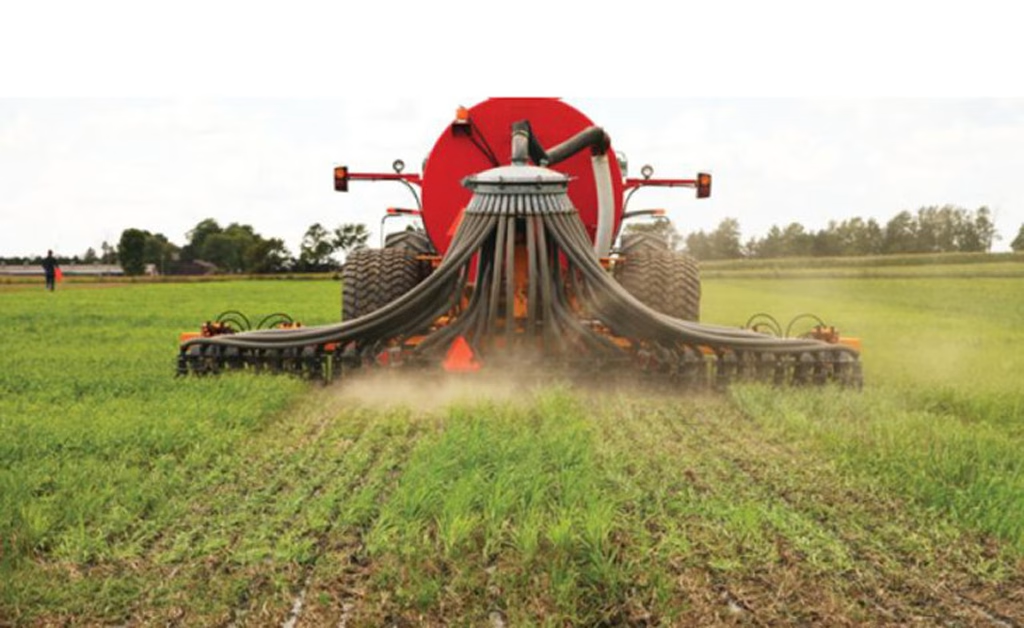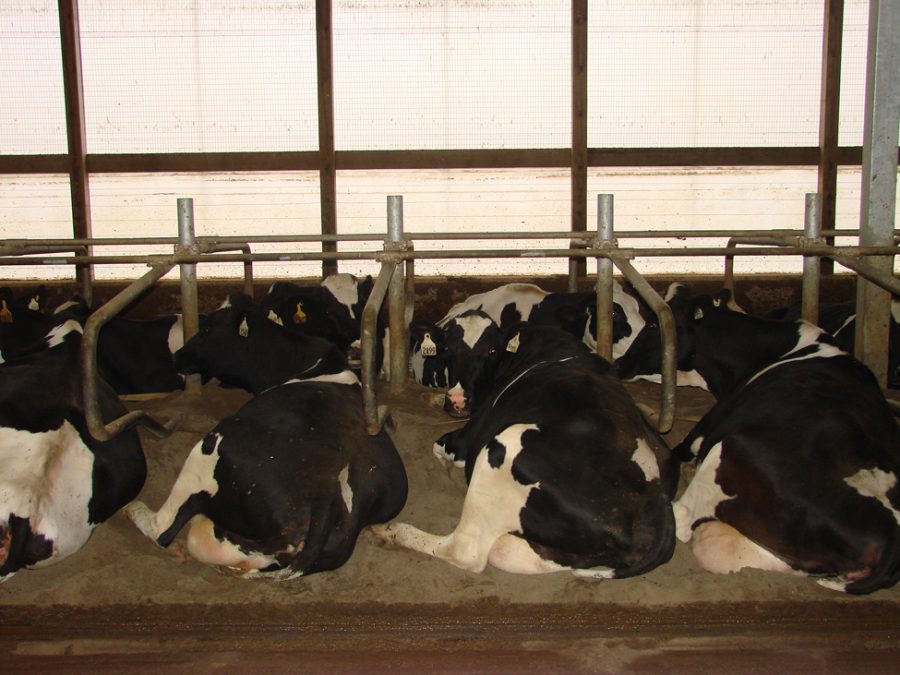Is the US agriculture sector in a recession? Learn what dairy farmers need to know to tackle challenges and protect their livelihoods.
Summary: Is the U.S. agriculture sector teetering on the brink of recession? Many dairy farmers and industry professionals are asking this pressing question as economic indicators present a mix of signals. From fluctuating milk prices to rising input costs, the landscape appears more unpredictable than ever. The U.S. farm sector faces a recession, with agricultural revenue expected to drop by 8.1% in 2023 compared to the previous year. This is particularly concerning for dairy farmers, grappling with erratic milk prices, growing running expenses, and mounting debt loads. Recent USDA statistics reveal that 40% of farmers have seen notable revenue declines, and some have even considered quitting the business altogether. Agricultural conditions in the U.S. are characterized by varying commodity prices, with certain crops performing better than others. Trade policies, such as tariffs and trade conflicts, have not entirely disappeared, and American farmers have suffered income losses due to continuous trade conflicts with China. Widespread droughts in the Midwest last year have caused decreased crop yields and higher feed prices. A potential recession will impact dairy farmers in several ways, including increased volatility in milk prices, high manufacturing costs, rising feed costs, and labor shortages. To distinguish between just surviving and flourishing, dairy farmers should monitor economic indicators such as milk prices, feed costs, interest rates, labor costs, trade policies, and weather patterns. Stay with us as we shed light on these crucial topics, helping you make informed decisions for your farm’s future.
- The U.S. agriculture sector is experiencing mixed economic signals, with a projected revenue drop of 8.1% for 2023.
- Dairy farmers face challenges such as fluctuating milk prices, rising input costs, and significant debt loads.
- According to USDA statistics, 40% of farmers have seen notable revenue declines, prompting some to consider exiting the industry.
- Trade policies and continuous conflicts, especially with China, have contributed to income losses for American farmers.
- Recent droughts in the Midwest have led to decreased crop yields and increased feed prices.
- A potential recession could amplify issues like milk price volatility, high manufacturing costs, feed costs, and labor shortages for dairy farmers.
- Dairy farmers should closely monitor economic indicators such as milk prices, feed costs, interest rates, labor costs, trade policies, and weather patterns.

Whether the U.S. farm sector is in a recession strikes the core of our daily life and business direction. Dairy farmers and other agricultural experts navigate unknown seas with erratic milk prices, growing running expenses, and mounting debt loads. Despite these challenges, the resilience of our farmers is commendable. Recent USDA statistics reveal a concerning trend: agricultural revenue is expected to drop by 8.1% in 2023 compared to the year before. According to the American Farm Bureau Federation, forty percent of farmers have seen notable revenue declines; some have even considered quitting the business altogether. Strategic planning and survival depend on knowing if we are in a recession; this relates to the fabric of our agricultural society and the lives of those who feed the country.
Riding the Rollercoaster of U.S. Agriculture: What’s Happening?
Let’s look at American agricultural conditions now. Imagine this: certain crops do better than others as commodity prices ride a rollercoaster. For instance, prices for soybeans and maize have somewhat increased; wheat still suffers (USDA, Market Outlook). This pricing variance directly impacts your bottom line.
Another mess on the side is trade policies. In recent years, tariffs and trade conflicts have still linger and have not entirely disappeared. A new report claims that American farmers have suffered notable income losses due to the continuous trade conflicts with China, one of the biggest markets for their products. Farmers Gov., USDA, This is your salary, not just a headline.
Then there’s the erratic weather. More often, extreme weather events are upsetting the seasons for planting and harvest. Widespread droughts that struck the Midwest only last year caused decreased crop yields and higher feed prices, something you, dairy producers, are all too familiar with. (USDA, Newsroom) .
Additionally, experts are weighing in on these matters. “The agriculture sector is facing one of its toughest years, with the convergence of high input costs, unstable commodity prices, and unpredictable weather patterns,” John Newton, PhD, Chief Economist of the American Farm Bureau Federation, recently said. (Newsroom, AFBF)
How Will a Potential Recession Impact Dairy Farmers?
Let’s Break It Down.
- Milk Prices: The Squeeze on Profit Margins
Although milk prices have always been a rollercoaster, we may witness considerably greater volatility in a recession. Usually, lower discretionary income translates into less demand. The USDA projects a declining milk price, directly impacting farmers’ income [USDA Report]. Simultaneously, manufacturing costs usually stay high, compressing profit margins to never-seen levels. For Wisconsin dairy farmers like John, the swings in milk prices cause ongoing concern. He said, “We’ve seen prices drop before, but with feed costs rising, it’s becoming harder to make ends meet.” - Feed Costs: A Growing Concern
The soaring feed prices are another major problem. Various worldwide events, including supply chain interruptions and climate change, have driven rises in corn and soybean prices. Feed accounts for a significant portion of a dairy farm’s expenses so that any cost increase might be harmful. The National Corn Growers Association claims corn prices jumped by more than 20% last year alone. Ohio dairy farmer Mary expressed worry, “We are spending so much more for feed today than we did last year. It is progressively seriously eating away at our earnings. - Labor Shortages: A Growing Challenge
Labor shortages provide even more complications. Many dairy farms mainly depend on hand labor; hence, recruiting qualified people has become more complex and costly. Labor expenditures have risen over 15% over the last two years, according to the American Dairy Coalition [ADC, 2023]. California dairy operator Tom said, “We have trouble finding dependable labor. The scarcity strains our already meager margins and drives salaries upward.
Dairy producers’ livelihoods are seriously threatened by changing milk prices, growing feed costs, and labor shortages. Let’s keep educated and ready for what is coming.
Economic Indicators to Watch
Monitoring economic data closely helps one distinguish between just surviving and flourishing.
The glaring danger signals in current economic data require our attention. Let’s go right into the details, first with GDP increase. Falling short of the expected growth, the U.S. economy increased at only 2.1% last quarter. Are fissures on an economic basis beginning to show?
Furthermore, unemployment rates reveal alarming patterns. Reflecting layoffs in essential industries, the unemployment rate has increased to 3.8% from the previous months. Though still modest, this increase points to possible problems with employment generation and economic stability.
Another area of interest is consumer spending, a vital driver of economic development. Consumer spending has indicated slowing down, even though the start early this year was intense. Retail sales only increased by 0.3%, suggesting cautious customer behavior. Could this be a forerunner of a more general economic crisis?
Here are some other critical indicators that dairy farmers should monitor:
- Milk Prices: Your income directly depends on the milk price. Milk price trends might reveal general economic conditions and market demand. Ensure you are current with information from sites like USDA’s National Agricultural Statistics Service (NASS).
- Feed Costs: Feed typically accounts for almost half of all production expenditures in dairy farming. Any changes can significantly affect your profitability—track commodities prices on marketplaces like the Chicago Board of Trade (CBOT).
- Interest Rates: These impact the value of assets and borrowing expenses. Keep a close watch on Federal Reserve statements, as higher interest rates can result in less availability of agricultural loans.
- Labor Costs: The availability and cost of trained workers may significantly affect daily operations. The Bureau of Labor Statistics (BLS) tracks employment patterns and pay increases.
- Trade Policies: Tariff and trade agreement policies may affect the cost of imported materials and export goods. Stay informed about developments in world trade from USDA’s Foreign Agricultural Service (FAS).
- Weather Patterns: Extreme weather may disrupt output; long-term planning calls for increased relevance of climatic patterns. Make use of tools like the National Weather Service (NWS).
These indicators, taken together, provide a picture of the economic scene. Consumer spending is losing speed, unemployment is rising, and GDP growth needs to match projections. These indications translate into possible difficulties for dairy producers, such as lower customer demand for dairy goods and financial instability. One should pay great attention to these economic indications and be ready for future developments.
Strategies for Dairy Farmers
Let’s get right to it. Although you might be under strain, be assured there are actions you can do to protect your business from recessionary times.
- Implement Cost-Cutting Measures
Go over your expenses very carefully. Are there places where you could cut the fat? Consider energy-efficient technologies that might cut your utilities for refrigeration and milking. Use group purchasing with nearby farmers or better prices negotiated with suppliers to maximize bulk savings. - Diversify Income Streams
Put not all of your eggs in one basket. Other income streams include organic dairy farming, agritourism, or value-added product sales like cheese or yogurt. Could your farm help a nearby Community Supported Agriculture program? Diversification helps to offset changing milk costs. - Invest in Technology
Technology is a game-changer. Take robotic milking systems, which may increase milk output and efficiency even with their initial outlay. Tools for precision agriculture may enable the best utilization of resources and feed. Investigate farm management systems that combine financial planning to maintain control of your budget. - Focus on Quality Over Quantity
Superior milk might demand a premium price. Establish stricter quality control policies and herd health campaigns. Use better food and conduct rigorous health inspections. This might appeal more to the higher-paying market groups your items serve. - Strengthen Financial Planning
Talk to financial advisers who know about agriculture. Create a rainy-day reserve and project many economic situations. Review your loan terms; may refinancing assist in reducing monthly payments? Being financially adaptable might make all the difference.
Recall—that your best friend is preparedness. Early proactive action will help you to boldly and successfully negotiate anything that comes your way.
Lessons from the Past: How Recessions Shaped Dairy Farming
Looking back in history, especially in dairy farming, recession have always clearly affected the agricultural industry. For example, dairy producers suffered severe difficulties during the Great Recession of 2008–2009. Milk prices fell drastically, and many farms battled to pay running expenses. According to the National Milk Producers Federation, some dairy producers saw price declines of up to 50% [NMPF].
Not only was the pricing erratic, but driven by rising worldwide demand and competition for grains, which intensified financial strains on dairy farmers, feed prices shot skyward. Many smaller farms failed to compete, which resulted in mergers and closings. Though it’s a hard reality, the past here is instructive.
Remember the early 1980s, another turbulent time defined by recession? Interest rates surged, and farmers who borrowed heavily during the 1970s boom saw themselves in dire straits. According to the U.S. Department of Agriculture, that period saw a flood of agricultural bankruptcies [USDA]. With many smaller businesses unable to survive the financial hardship, agricultural methods and the framework of the dairy farm business also saw notable changes at this time.
Knowing these trends helps us move forward. Those without excellent means suffered during downturns as dairy production became more capital-intensive. Knowing these historical effects can help us prepare for probable economic difficulties today. We can expect possible results and adjust our plans to ensure we’re not surprised.
The Bottom Line
Particularly in dairying, the U.S. agricultural industry has financial difficulties marked by unstable markets and dubious projections. Our study emphasizes the need to monitor economic data and change plans to help prevent a recession. Dairy producers may negotiate these challenging circumstances with professional knowledge and valuable skills.
Weathering any financial storm ahead will depend critically on being informed and ready. Ask yourself as we go forward: Are you prepared to modify your business practices to fit the needs of an evolving economy? Use industry resources, join conversations, and act early to protect your livelihood.
Learn more:
- Why 80% of U.S. Dairy Farms Are Struggling: An Insider’s Look at the Unseen Challenges
- Unveiling the USDA Milk Report: Find Out Which States are Leading and Lagging!
- The Hidden Crisis: Why U.S. Dairy Farms Are Disappearing Faster Than Ever!
 Join the Revolution!
Join the Revolution!
Bullvine Daily is your essential e-zine for staying ahead in the dairy industry. With over 30,000 subscribers, we bring you the week’s top news, helping you manage tasks efficiently. Stay informed about milk production, tech adoption, and more, so you can concentrate on your dairy operations.







 Join the Revolution!
Join the Revolution!








